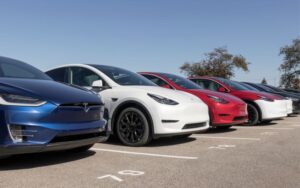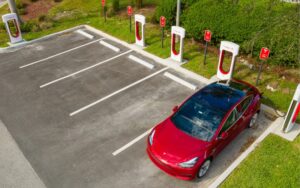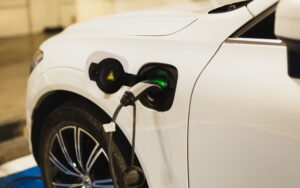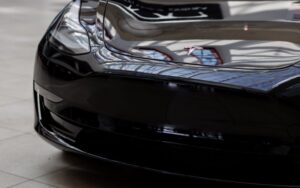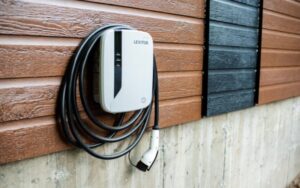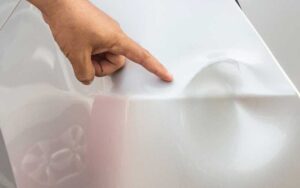This is How to Know Which Battery Tesla Does Use!
It’s challenging to catch up with Tesla as they constantly manufacture many models with mind-blowing specifications, keeping Tesla at the top of the ladder in the EV industry.
However, this consistent change affects the battery type of Tesla as many models harbor different types of batteries.
This can confuse a new Tesla owner as you might not know the type of battery your Tesla model contains.
To know if your Tesla uses a nickel cobalt aluminum battery, open your vehicle’s charging menu and click “set limit.” Your Tesla uses an NCA battery if “daily and trip” appears on the screen. However, if 50% and 100% appear, your Tesla uses a lithium iron phosphate battery.
This article will provide the necessary details on identifying your Tesla battery, its size, and more.
How to Tell Which Battery Your Tesla Uses?
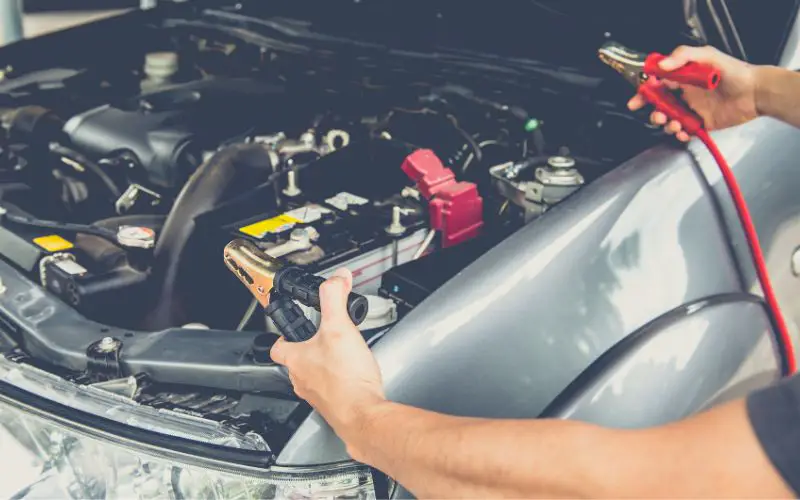
Knowing which battery your Tesla uses is crucial as it enables you to have good knowledge of its charging recommendations, capacity, range, and other essential details.
Admittedly, the battery Tesla owners will get depends on the trim levels and models they purchase.
Nonetheless, Tesla has made it easy to effortlessly check the kind of battery your Tesla uses through the menu bar in your vehicle.
Tesla uses different batteries for the models, and they include nickel, cobalt aluminum, and lithium iron phosphate batteries.
You can find these batteries in old and new models of Tesla. Notwithstanding, let’s delve into these batteries properly and how to know which one your Tesla uses.
The nickel cobalt aluminum (NCA) batteries primarily comprise nickel and cobalt. These batteries contain high energy density.
In other words, they are the best options for the models of Tesla that require fast and powerful acceleration.
Most batteries usually require a full charge (100%) to function properly; however, that’s not the case with NCA batteries.
These batteries do not require a full charge to function effectively. Hence, the charge shouldn’t exceed 90%, especially if you use your vehicle daily.
Overcharging or charging NCA batteries at high states may cause the battery’s instability, leading to degradation.
Once the batteries degrade, they lose efficiency and might eventually stop functioning.
Hence, charging the batteries up to exactly 90% or at least 80% for battery stability and continual efficiency is vital.
Additionally, it’s easy to check if your Tesla uses an NCA battery, and you can do it at your convenience.
To begin with, open the menu in your vehicle, scroll up to charging, and click “set limit.” Your Tesla uses an NCA battery if “daily and trip” appears on the screen.
On the other hand, lithium iron phosphate (LFP) batteries are quite popular in the electric vehicles industry due to their remarkable features.
These batteries are composed of lithium, iron, and phosphate, which are relatively easy to find in the market, thereby increasing the massive production of the batteries.
Unlike NCA, LFP batteries have high stability and a long lifespan. In other words, you can charge LFP batteries up to 100%.
However, it’s best to charge LFP batteries up to 100% once a week to maintain the batteries’ stability, lifespan, and efficiency.
Daily charging up to that percentage (100%) may cause battery degradation, leading to other problems. Hence, it’s wise to stick to the rules for charging LFP batteries.
Plus, like NCA, it’s easy to check if your Tesla uses an LFP battery. To check, open the menu, scroll to charging, and click “set limit.”
If 50% and 100% appear, your Tesla uses a lithium iron phosphate battery.
Alternatively, you can check by clicking on controls on the screen, then software, and the additional vehicle information.
How to Identify Your Tesla Battery Type Physically?
You can physically identify your Tesla battery type by checking your owner’s manual. Plus, you can open your hood to check the battery’s specifications.
Most Tesla owners often find it challenging to purchase the right battery for their Tesla, especially when they want to replace the old battery with a new one.
If you’re facing this dilemma, you don’t need to worry, as I’ll explain the types of Tesla batteries and the models they come with to lessen your burden.
Generally, the electric vehicles of Tesla use four types of batteries, which include 18650-type, 4680-type, 2170-type, and prismatic-type batteries.
Let’s look at these batteries critically.
#1. 18650-type Tesla Battery
To begin with, the 18650-type Tesla battery is cylindrical and has a length of 65 mm and a diameter of 18 mm.
With its nominal voltage of 3.7V, this battery can charge at a maximum of 4.2V. Plus, it discharges at 2.5V and stores 3500 mAh.
Below are the models that contain an 18650-type Tesla battery.
#1. Roadster
This model contains the 18650-type Tesla battery that can last for 244 miles with a single charge.
With this battery, it can speed within 3.8 seconds from 0-60 mph and can reach a maximum speed of 125 mph.
Additionally, its average efficiency is approximately 88%, with an MPGe of roughly 120.
#2. Model S
The Model S utilizes many 18650 battery cells to deliver 405 miles as its maximum range on a single charge. Furthermore, it can achieve a maximum speed of 216 miles every hour.
Lastly, its highest efficiency is about 94%, and just like the Roadster, its MPGe is about 120.
#3. Model X
The Model X also comes with an 18650-type battery, which allows the vehicle to achieve 0-60 mph in roughly 2.9 seconds.
It harbors 348 miles on a single charge as its maximum range, a maximum speed of approximately 163 miles for every hour.
Lastly, its highest efficiency is roughly 93%, and it has an MPGe of 105.
#2. 2170-type Tesla Battery
This type of Tesla battery is an advanced version of the 18650-type battery despite having the same nominal voltage, discharge, and maximum charge.
The 2170-type battery has a length of 70 mm and a diameter of 21 mm, giving it the ability to store up to 4800 mAh in each cell.
Below are the models that contain an 18650-type Tesla battery.
#1. Model 3
This Tesla model was first in line to get the 1270-type battery. Its new and upgraded maximum mAh for every cell allows it to achieve 358 miles of maximum range.
With this battery, it can go from 0-60 mph within 3.1 seconds and can achieve 162 miles for every hour at its maximum speed.
Lastly, its highest efficiency is roughly 93%, with its MPGe at 132.
#2. Model Y
The battery of Model Y can provide 318 miles on a single charge if you push it to its limit. It can move from 0-60 mph within 4.1 seconds.
Interestingly, it can deliver 155 miles for every hour as its maximum speed, a high efficiency of around 97%, and 125 MPGe.
#3. 4680-type Tesla Battery
Elon Musk (CEO of Tesla) grabbed the public’s attention in October 2020, mentioning that all the new Model Y electric vehicles would come with powerful 4680-type batteries.
This battery exceeds the capacity and size of other Tesla batteries. It has a length of 80 mm and is 46 mm in diameter.
#4. Prismatic-type Tesla Battery
Although this battery is yet to hit the market, it’s expected to come with Model 3 and Y vehicles that are of a standard range.
Nonetheless, this battery is stable, affordable, and provides usable energy for your Tesla.
To wrap things up, the table below summarizes the types of Tesla batteries and the models that utilize them.
| 18650-type | 2170-type | 4680-type | Prismatic-type |
|---|---|---|---|
| Roadster | Model 3 | New Model Y | Model 3 |
| Model S | Model Y | Model Y | |
| Model X |
How Do I Know the Specifications of My Battery Pack?
You can know the specifications of your battery pack by locating the sticker at the front of the battery pack. It usually contains the basic information about your battery.
Knowing the specifications of your battery pack is vital as it provides information about its size, capacity, and much more.
The first label at the top of your battery pack usually indicates the size of your battery. For instance, you could have your Tesla Model X battery showing a 90 kWh battery pack.
It’s crucial to note that Tesla battery packs come in different versions, such as A, B, C, and D. These versions are not the same as they contain different features.
Nonetheless, you can easily purchase the battery pack of your choice, provided it’s compatible with your vehicle.
How to Check Your Tesla Battery Size?
One of the easiest ways of checking the size of your Tesla battery is by checking the information on the sticker attached to your battery pack.
Alternatively, you can check your owner’s manual for the size of your Tesla battery. Knowing the size of your battery has some benefits.
To begin with, it helps you to get the right size when you want to purchase a new Tesla battery for your vehicle.
It also serves as an example that helps you settle for other options in case the original Tesla battery is unavailable.
Which Battery Does Tesla Use for Each Model?
Tesla currently uses lithium-iron phosphate batteries for each model of their electric vehicles.
The capacity of these batteries is exceptional and offers usable energy that the car uses for its smooth movement.
Lithium iron phosphate batteries can be found in every model of Tesla electric vehicles as the brand switched nickel cobalt aluminum to lithium iron phosphate.

Hey, I’m Michael Davis, a 35-year-old with a degree and a love for cars and tech. Since I was a kid, cars have been my thing—so much that I even thought they ran on magic beans! Fast forward, and I’ve built Vehicle Army, your one-stop-shop for easy-to-understand car facts.

